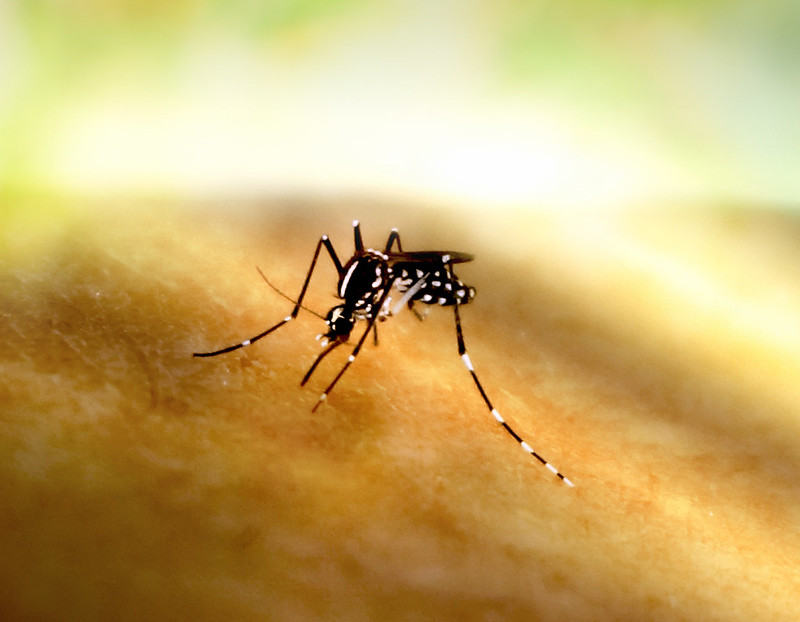The Road to a Chikungunya Vaccine: Accelerating Solutions to Addressing Health Threats Posed by Climate Change
The Road to a Chikungunya Vaccine: Accelerating Solutions to Addressing Health Threats Posed by Climate Change
By Eliza Love and Damian Walker

Chikungunya, a mosquito-borne viral disease, is a growing global threat. Earlier this year, the World Health Organization raised awareness of the alarming surge in cases and warned of looming widespread outbreaks. As climate change continues to intensify the effects of vector-borne diseases like chikungunya, the global community will need a comprehensive understanding of the disease burden and intervention landscape to inform how to most effectively accelerate response efforts. There are no vaccines approved for human use to prevent chikungunya, but Management Sciences for Health (MSH) is supporting the work of the Coalition for Epidemic Preparedness Innovations (CEPI) to change that.
A Growing Threat
Chikungunya can cause fever often accompanied by debilitating joint pain, which can persist for months or years and compromise long-term quality of life. Millions have been affected by chikungunya, and more than a billion people are estimated to live in areas where transmission is endemic. However, the actual burden is likely higher than reported data show. The disease is frequently misdiagnosed as dengue, given the similarity in symptoms among these and other, more common mosquito-borne viruses and underinvestment in chikungunya disease surveillance. Following a global resurgence in 2004, chikungunya has contributed to significant morbidity, strained health systems, and caused notable socioeconomic impacts.
Intensifying Impact of Climate Change
The threat posed by chikungunya stands to increase significantly due to climate change: nearly a billion additional people could become at risk for Aedes-borne arboviral diseases, such as chikungunya, by 2030 as a direct result of climate change. Rising temperatures and changing rainfall patterns have provided increased habitats for vectors harboring deadly diseases, while deforestation and urbanization have altered transmission dynamics. Chikungunya has recently experienced an alarming spread—beyond typical geographic areas and outside of normal seasonality—largely attributed to changes in climate and population movement. Earlier this year, the Pan American Health Organization released an epidemiological alert as the Americas witnessed an increase of more than 260% in cases in 2023 as compared to the average of the prior four years. As environments become unlivable, climate migration will amplify spread across borders and to new communities.
The Road to a Vaccine
CEPI has invested in the development of three chikungunya vaccine candidates with promising results and anticipated licensure becoming closer. To help address outstanding R&D questions and, ultimately, support the roll out of Chikungunya vaccines in endemic countries, CEPI and the European Commission have issued a call for proposals, worth up to €50 million, to fund effectiveness studies and further scientific studies to help expand the potential use of licensed Chikungunya vaccines for children, people who are immunocompromised, and pregnant women.
MSH, in collaboration with Linksbridge and CEPI, conducted a formative assessment to understand how those who make and influence vaccine and vector control policies perceive demand, prioritization, financing, and affordability of a chikungunya vaccine across a group of priority countries. To support planning for equitable global chikungunya vaccine access in the face of increasing disease burden, the assessment aimed to answer strategic vaccine introduction questions such as: Is chikungunya perceived to be a public health priority? What factors influence vaccine introduction decision making? Would you envision a chikungunya vaccine be considered for routine use or outbreak response? How would a chikungunya vaccine compare to other vaccines in the pipeline? What would be a reasonable target cost to introduce the chikungunya vaccine?
MSH led key informant interviews with representatives from government, technical agencies, and academia across a group of low- and middle- income countries that included Brazil and India, which account for the overwhelming share of the known global disease burden. We then combined interview findings with a comprehensive desk review to develop detailed country profiles on chikungunya programming and prioritization, vaccine pipeline and introduction decision factors, and vaccine financing sources and trends.
MSH’s targeted country assessment suggests the following three things will be essential to facilitate introduction of the chikungunya vaccine:
- Strengthen evidence base for decision making. Bolster surveillance systems and ensure sufficient disease burden data to target the highest risk geographies and populations.
- Increase public and political awareness. Stimulate recognition of the growing impact of chikungunya among the public and politicians to galvanize the commitment needed to respond to this disease in addition to dengue and malaria.
- Ensure affordability and adequate financing. While vaccine development is one feat, vaccine access is another. To facilitate equitable access to those most in need, vaccines must be affordable and their introduction paired with sufficient and sustainable financing.
Doubling Down on Climate and Health
While interventions such as vaccines are a necessary way to address the health crises exacerbated by climate change, it is crucial to address the root cause. World leaders convened in Paris in June with the goal of driving consensus around unlocking sufficient and equitable financing at the pace and scale required to address escalating climate impacts and will reconvene later this year at the UN Climate Conference, with the first official health day at COP28. The high-income countries responsible for the vast majority of the climate crisis must double down on efforts to curb the cascading repercussions by not only meeting but exceeding global climate commitments. At the same time, the global community must race to address the exacerbating health impacts of our changing climate and ensure availability of the novel innovations needed to minimize the growing threat of vector-borne diseases.